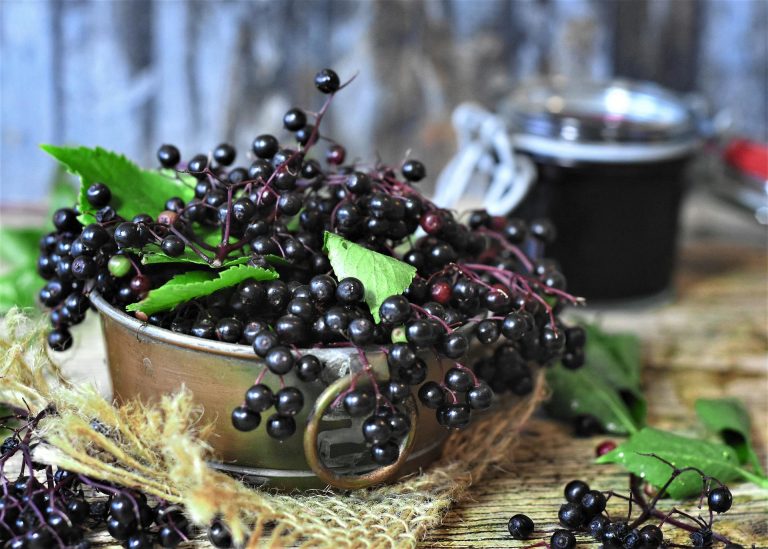Elderberry is one of man’s earliest medicinals, with records showing evidence of cultivation as early as the stone ages. Throughout recorded history, a variety of cultures have harnessed the plant’s many assets for use in medicine, music and more! It’s no wonder the plant has a mystical lore engaging the spiritual world and magical properties.
Elderberry is a large deciduous shrub consisting of many pithy stems which bear large umbles of delicate flowers, followed by small, usually dark berries. With over two dozen recognized species, the genus Sambucus can be found in many parts of the world. Sambucus nigra is a complex of species that includes both wild and cultivated varieties commonly found in Europe and North America.
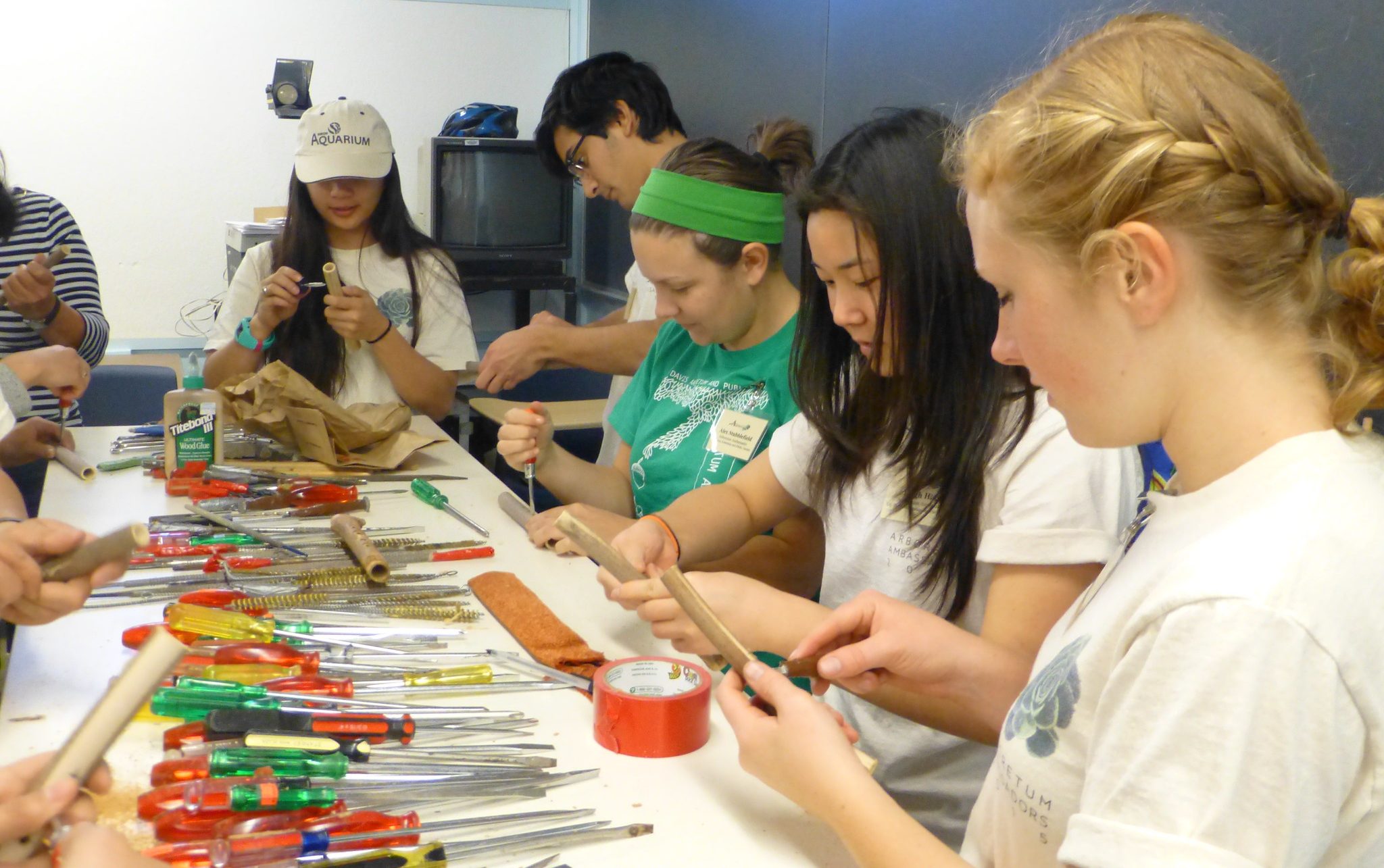
Fun facts and folklore about elderberry
The word “elder” stems from the Anglo-Saxon word auld, meaning “old,” or “of long duration;” while in Low-Saxon the word is elhorn, meaning “fire.” The easily hollowed stems were commonly used to like bellows to blow air onto embers to start a fire.
Speaking of fire, the Romani people considered the burning of elder wood taboo, perhaps because of the eerie hissing sounds generated by the fast-burning, practically-hollow stems.
In Europe, elderberry is often linked with the Celtic fairy realm. Pagan traditions held that the Elder Mother was a spirit inhabitant of the plant, who gave it the ability to protect, heal, and dispel evil influence; thus endowing the plant with a measure of respect and reliance. Bits of the plant might be carried around much like a good luck charm.
Success
You are now signed up for our newsletter
Success
Check your email to complete sign up
In Norse mythology, the plant is closely associated with the Earthmother “Hulda,” who’s fiery ether generated not only the human spirit, but also left a cosmic trail (the Milky Way) which led the soul back to its origin upon death. In Denmark, this “Hylde-Moer” was said to live within the plant, and furniture made from its wood would be haunted by her spirit.
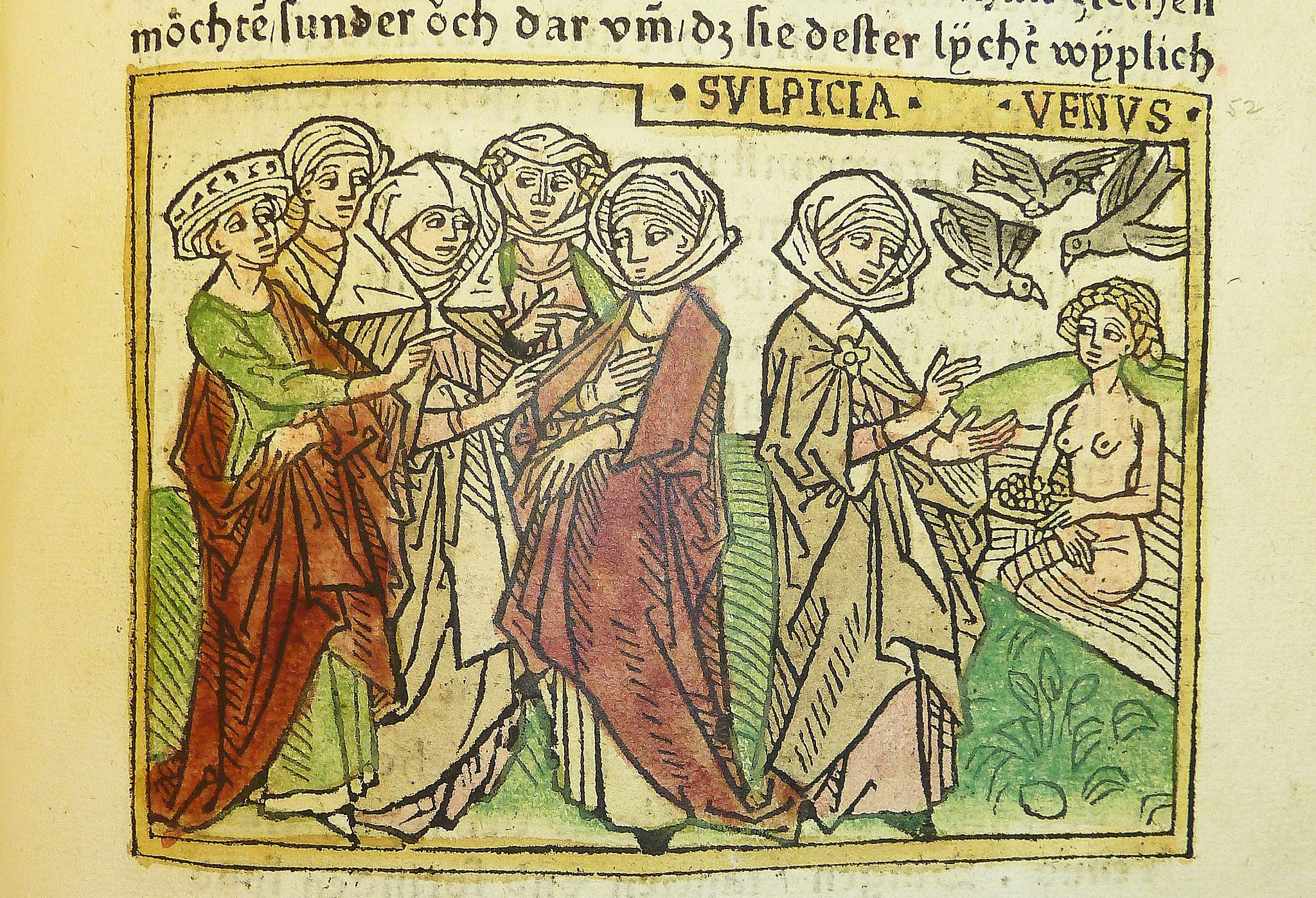
Traditional medicinal uses of elderberry
Early Europeans
Elderberry has long been recognized for its many medicinal properties in Europe, being described by Hippocrates (460-375 BC) — ancient Greek’s “father of medicine” — as a “medicine chest” in itself.
Roman author and naturalist Pliny the Elder (23-79 AD) described in his writing both culinary and medicinal uses for elderberry and elder flowers, including relief for tired eyes and serious skin ailments.
For centuries, elderberry was used in Britain to treat scores of different maladies, ranging from cuts and burns, to fever and the plague. As 17th century British researcher John Evelyn put it, “If the medicinal properties of its leaves, bark, and berries were fully known, I cannot tell what our country man could ail for which he might not fetch a remedy…”
Native Americans
The Natives of North America employed elder medicine long before the settlers arrived from Europe, with treatments varying from tribe to tribe.
The Choctaws made an herbal salt with the leaves which was applied to an aching head, while the Houna boiled the bark to make an anti-inflammatory wash. The bark of the root was used by the Meskwakis to make an expectorant tea, and the Mohegans found that tea from the flower soothed colic.
Elderberry was used widely to treat infections and as a general tonic, with the tiny fruits being collected and dried for winter use. The flowers were commonly used topically for aches, pains and wounds, and to improve the skin.
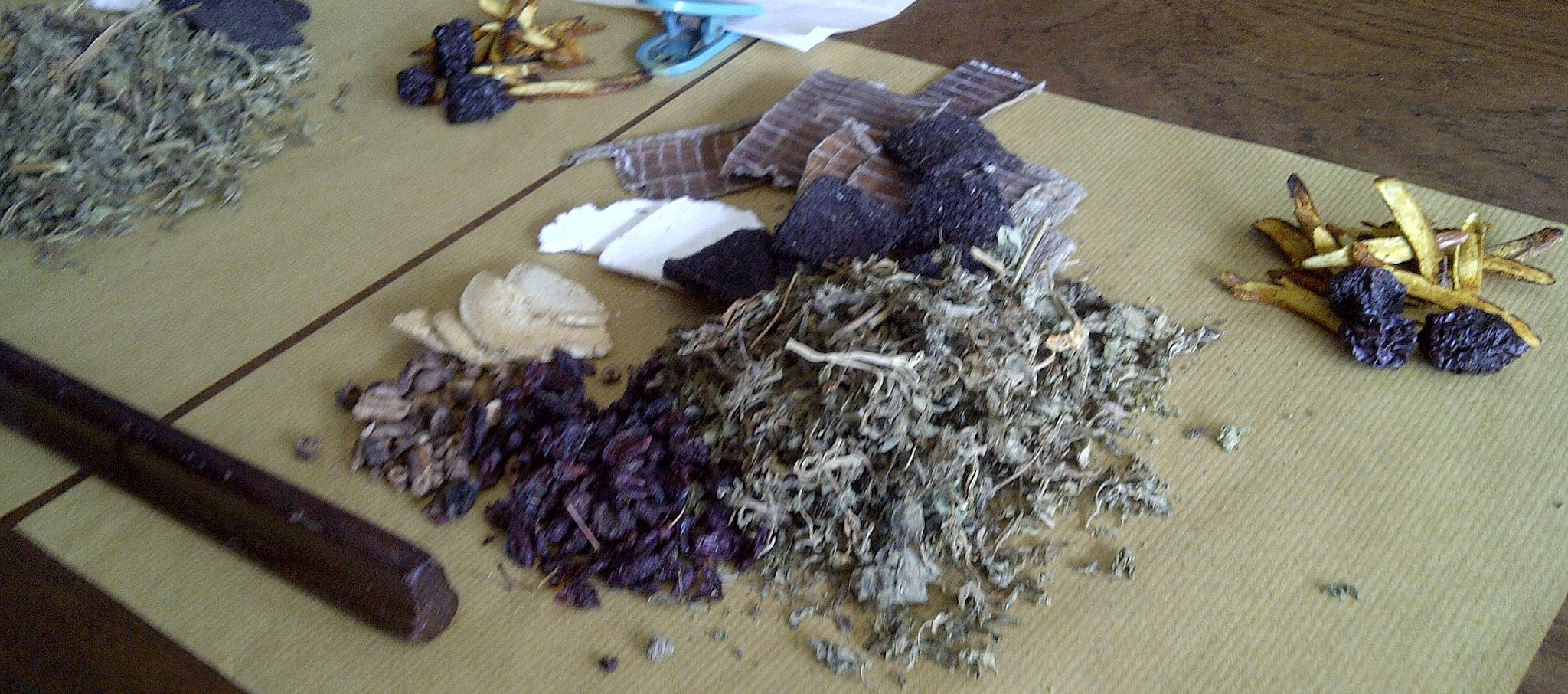
Traditional Chinese medicine
Known as Jie Gu Mu (接骨木) in Chinese, the elderberry is linked with the lung, kidney and bladder meridians in traditional Chinese medicine (TCM). Among its many uses, it is said to expel phlegm, promote urination and reduce swelling. It is also used to increase sweating and stop bleeding.
Elderberry is considered effective for “clearing heat,” “dispelling wind,” and “resolving damp.” The berries and flowers have been used in TCM for hundreds of years to treat a wide range of conditions, including constipation, chest pain, congestion, joint and muscle pain, as well as the common cold and seasonal flu. Medicinal wines made from the berries are used to treat pain resulting from injury or arthritis.
The inner bark is a more powerful medicinal, used for chronic constipation, edema, and gout.
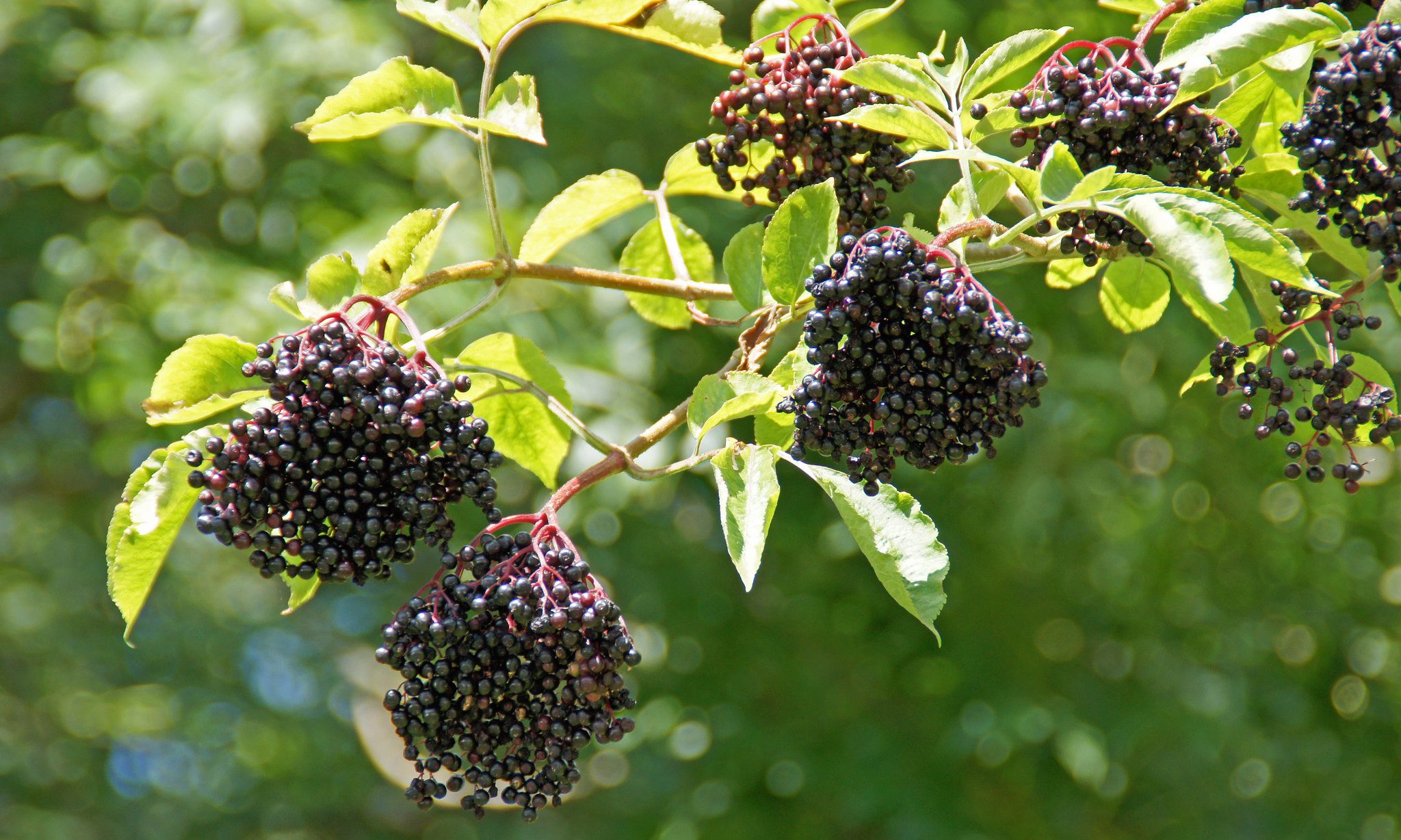
Recognized health benefits and medicinal properties
While modern medicine is hesitant to endorse any herbal remedies, scientific research has shown that elderberry has many properties that would explain its broad use as a traditional medicinal.
The berries are very high in vitamin C, a leading supplement promoted for immune support. One cup of the fruit provides more than half the daily recommended allowance of this nutrient. They are also a good source for a number of other antioxidants, including anthocyanins, phenolic acids, and the flavonols quercetin, kaempferol and isorhamnetin. Anthocyanin is also recognized as an anti-inflammatory.
Elderberries have been shown to enhance the body’s production of cytokines, important messengers for immune response. The powerful antioxidant anthocyanin may further boost this activity. Some studies suggest that elderberry can lower both blood pressure and cholesterol.
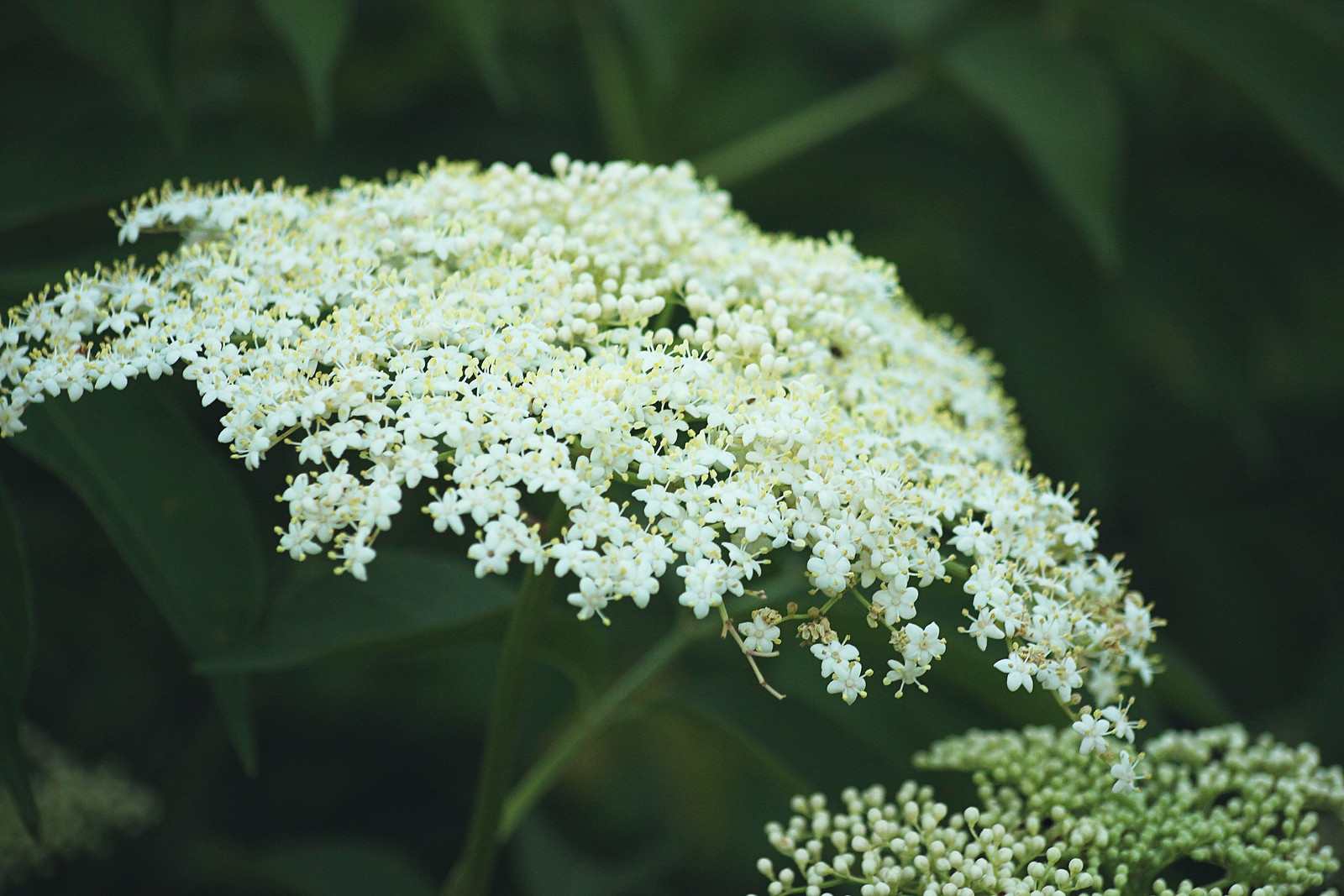
With 10 times the anthocyanins as the berry, elder flowers also have antioxidant and anti-inflammatory properties. In addition to the compound quercetin, a natural antihistamine; the flower also has triterpenoids, which exhibit antiviral and antibacterial activities; and chlorogenic acids, which are believed to lower blood pressure and help treat diabetes.
The flower is also rich in vitamin A, an important nutrient for skin care and eye health.
Studies have shown that taking elderberry extract at the onset of cold and flu symptoms can significantly reduce recovery time and alleviate symptoms.
It should be noted that fresh or unripe berries contain approximately 3 mg cyanide per 100 grams (.0001 ounce per 1.3 ounces) and are considered unsafe. The leaves, bark, roots and seeds contain somewhat more, but it would still be difficult to consume the quantity required for a fatal dose. Common symptoms from consuming these include dizziness, diarrhea, numbness, nausea and vomiting, and may cause nausea or diarrhea. Cooked berries and flowers are safe to consume.
Modern day applications and recipes
The elderberry continues to hold a place in modern herbal medicine cabinets, while gaining popularity in the commercial supplement department as well. Extracts of both the berries and flowers are promoted as a preventative treatment for colds and flu. Elderberries’ antioxidant and antimicrobial properties have also prompted their use in skin care products.
Herbalists still employ the plant for many other traditional uses. In addition to the popular immune-boosting elderberry syrup, tea from the flower may be used as a diuretic, a mild laxative or an antiseptic wash. In the case of hay fever, it is used as an antihistamine, and it is also taken for the treatment of respiratory infections and inflamed sinuses.
With promising lab results, research on the plant’s effectiveness on humans continues, with some health facilities already integrating elderberry into their disease treatment programs.
Whether the plant ‘s medicinal value is recognized by empirical science or not, elderberry can certainly be enjoyed for its culinary appeal.

Elderberries are commonly used to make syrups, jams and jellies, or wines; while the flowers may be cooked into pancakes, or used to make a variety of beverages. In Romania, elderberry flowers are the main ingredient in a popular fermented lemon drink.
Cultivating elderberry plants
Elderberry is relatively easy to grow, and fairly difficult to get rid of. As long as it has enough water, a mature plant will self-sow, spreading seedlings wherever birds might drop them. The plant is also easily propagated by cuttings, which will generate roots when placed in water.
Elderberry likes well-drained, moist, loamy soil; it will not tolerate drought. The plants need plenty of water to get established, and afterwards require at least an inch of water per week during the growing season.
Elderberries are shallow-rooted shrubs. To avoid disturbing the roots by weeding, apply mulch to the understory. The roots are likely to send up new shoots at some distance from the main stems. These you can cut back, use for propagation, or allow to spread.
Let your new elderberries grow unfettered for two years. Canes reach their peak of production at three years. Removing old stems and thinning the younger ones from established plants in the spring will promote new growth and plenty of berries. Leave a few canes in each of the one-year, two-year and three-year categories to ensure a good annual yield.
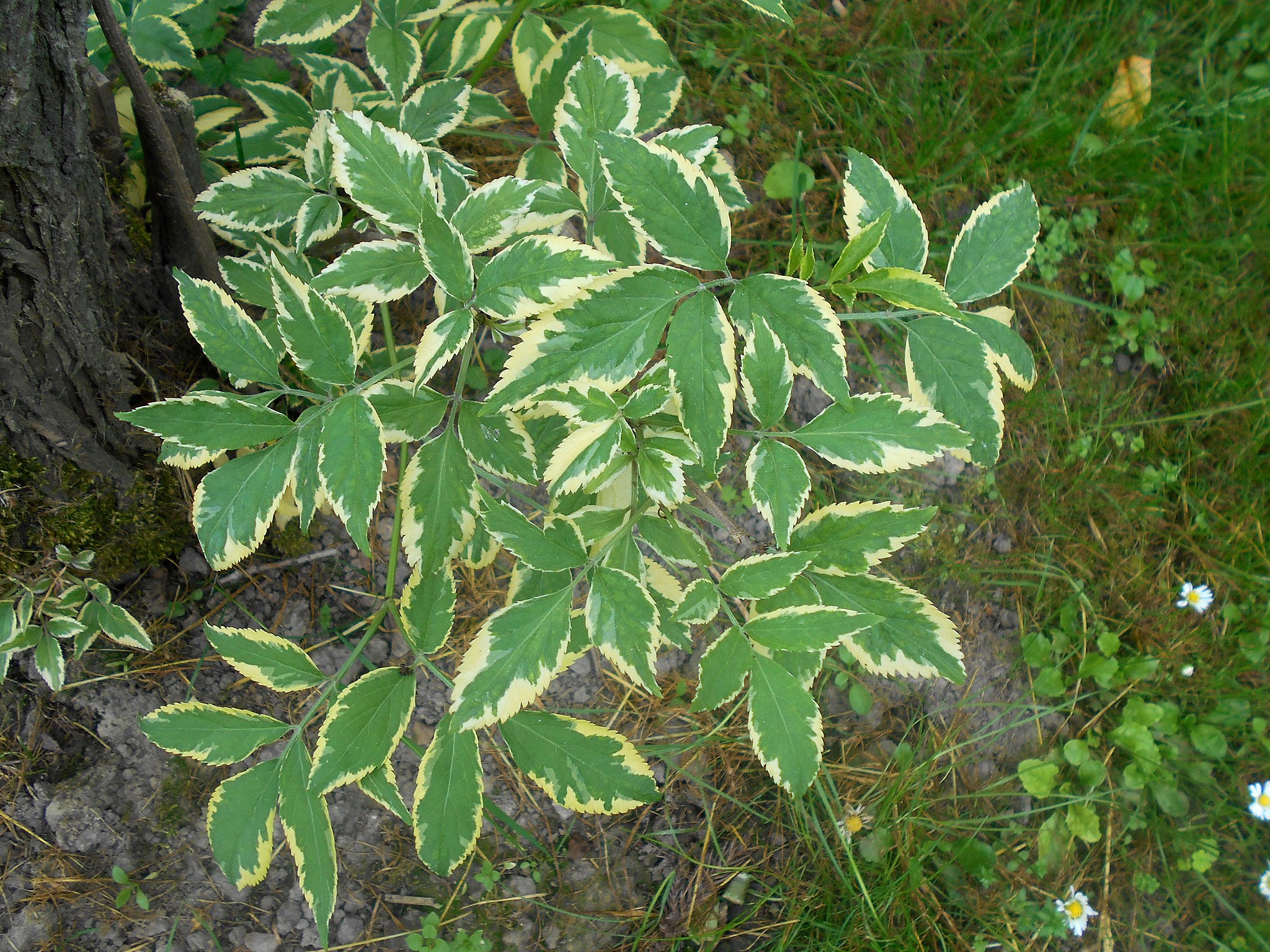
To ensure fruit, two different cultivars are necessary for cross-pollination. Harvesting flowers for use in herbal recipes will conserve the plant’s energy to promote larger berries on the remaining clusters.



